Gunma Prefecture
-
Kumanodaira
-
Myogi
-
Oshimacho
-
[Karuizawa — is located across the prefectural border in Nagano Prefecture, check out our page on Nagano Prefecture for information]
Kumanodaira 旧熊ノ平駅
Kumanodaira is the name of an old railway station. In its time it served as the stop where an extra engine was attached to the train coming from Tokyo and heading up the mountain to the resort town of Karuizawa. Today it can be reached via Route 18, the winding mountain road which drops down from the Usui Pass on the east side of Karuizawa town.
For over 20 years, since the opening of the Shinkansen link between Tokyo and Karuizawa, trains no longer use this route and it has fallen into a state of disrepair — one of the many abandoned facilities that litter Japan's countryside.
Now, between Yokokawa Station (at the end of the Shinetsu Line from Takasaki Station) there is a walking trail that follows the route of the old railway line up to Kumanodaira Station. At one point the trail passes over Megane-bashi, a red-brick viaduct built at the start of Japan's industrial revolution in the late 1800s.
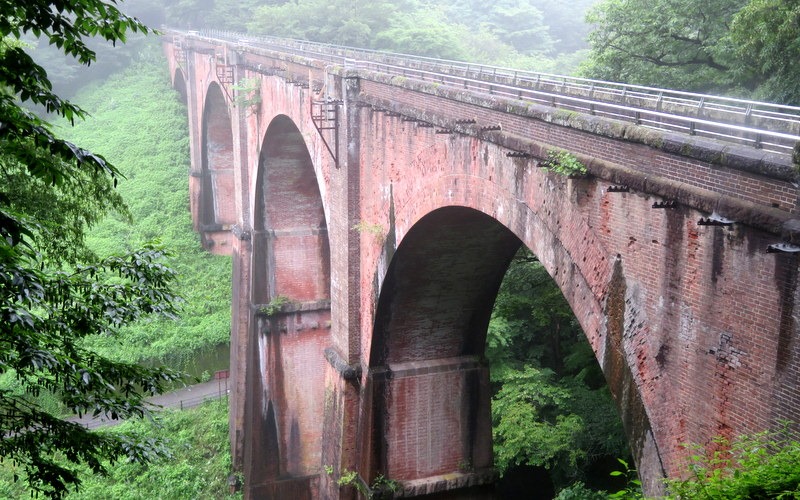
It is a pleasant hike — a gentle rise up and a gentle descent back — to Kumanodaira at any time of the year. Under a blue winter sky, when the fresh green leaves break out in the spring, or during the autumn when the mountainsides are covered in seasonal finery of vivid shades of red, orange, yellow, brown and gold it is especially rewarding. But for those who do not want to walk and who have their own transportation, there is a car park right below.
There is also a JR Bus service between Yokokawa and Karuizawa stations, but there are only about six buses a day so check departure times at the tourist information centre close to Yokokawa Station (about 100 metres to the left after exiting the station). The buses departing at 0810, 1010 and 1205 will give you some time to wander around at Kumanodaira, but confirm any return times before getting off the bus at Kumanodaira bus stop.
On the opposite side of Route 18 from the car park/bus stop there is a short but steep set of steps to climb. Above the final step it is level ground, and the immediate area around the old station buildings is only about 200 metres long so there are no long hiking trails to worry about — but it is nice to walk through the tunnel and go as far as Megane-bashi, which will take an hour or so there and back.
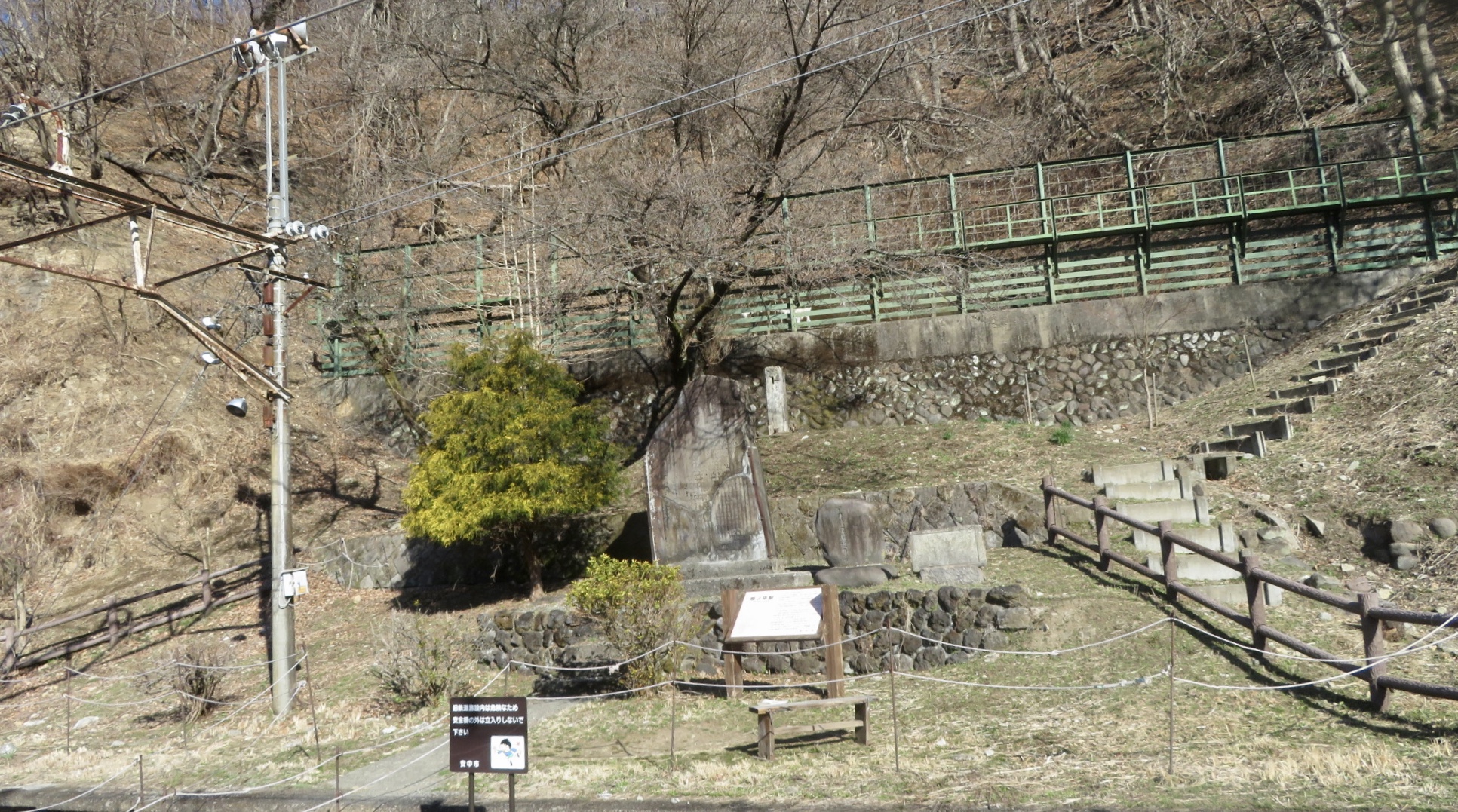
Anywhere around Kumanodaira there is always a chance to see Copper Pheasant. During the winter, right at dawn and just before dusk it is a good area to look for four species of woodpecker: White-backed Woodpecker, Great Spotted Woodpecker, Japanese Green Woodpecker and Japanese Pygmy Woodpecker.
Kumanodaira is also a fairly reliable spot for raptors, and Mountain Hawk Eagle sometimes appears, as well as Eurasian Sparrowhawk and Japanese Sparrowhawk. Golden Eagle is reportedly an occasional visitor to the mountain ridges above Kumanodaira, and two or three decades ago a well known viewing spot for this species was at Mount Myogi, only a few kilometres away to the southeast.
In the summer Blue-and-white Flycatcher and Narcissus Flycatcher breed in the forest around Kumanodaira, and Japanese Thrush can be heard singing early on summer mornings, or during late afternoons. A familiar early-morning sound in midsummer is the mournful whistle of the White-bellied Green Pigeon, and the songs of noisy Lesser Cuckoo or the "pu-pu, pu-pu" calls of Oriental Cuckoo carries across the valleys between the hills.
During winter finches are often in the area and Brambling, Eurasian Siskin, Hawfinch, Japanese Grosbeak and (Grey-bellied) Bullfinch can be seen. Japanese Accentor, Daurian Redstart and Rustic Bunting have been recorded there, and introduced Hwamei are usually around. Other woodland species include Eurasian Jay, Eurasian Nuthatch, Eurasian Treecreeper and Varied Tit, Willow Tit and Japanese Tit.
Mammals in this region include: Japanese Serow, Japanese Deer, Japanese Macaque, Japanese Badger and Red Fox (the latter sometimes can be found waiting at the roadside for free handouts of food — please do not encourage this behaviour). Signs warning of the presence of Asiatic Black Bear are posted here and there so look out for them during early morning or late evening during the summer or autumn.
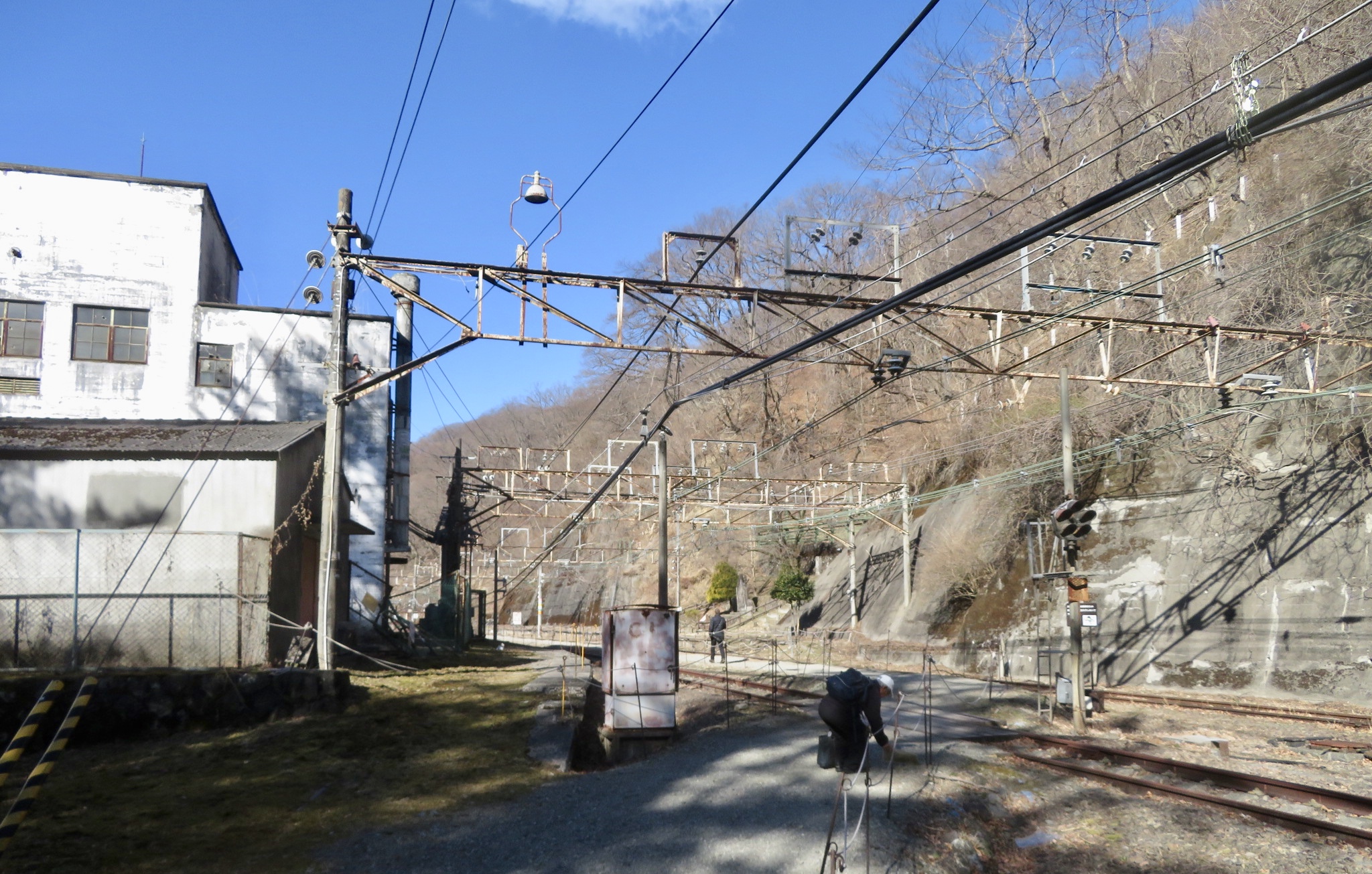 Map information: 36.354543, 138.684592
Map information: 36.354543, 138.684592
Yokokawa tourist information office: 027-329-6203
Bus information (in Japanese): 0267-22-0588
Gunma Prefecture, Mount Myogi area
群馬県妙義山林道 妙義湖
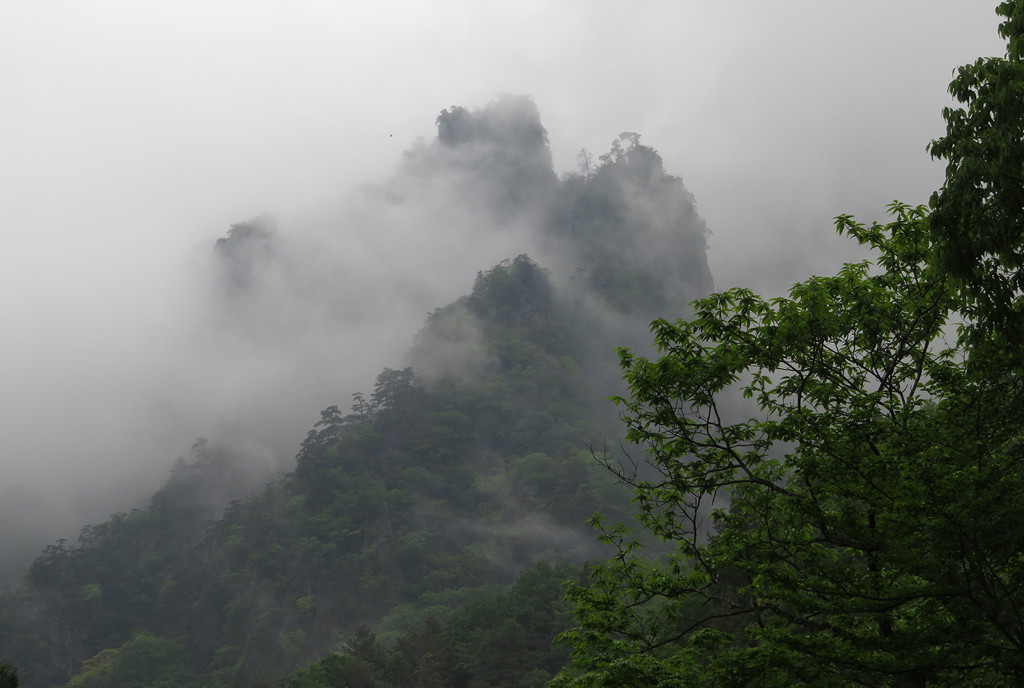
For many birders visiting Japan Copper Pheasant is high on their list of target species. It's a wide-ranging endemic found in many parts of Honshu, Shikoku and Kyushu, but actually seeing one clearly, whether on the ground or at roost in a tree, as opposed to catching a fleeting glimpse in flight, is a challenge to say the least!
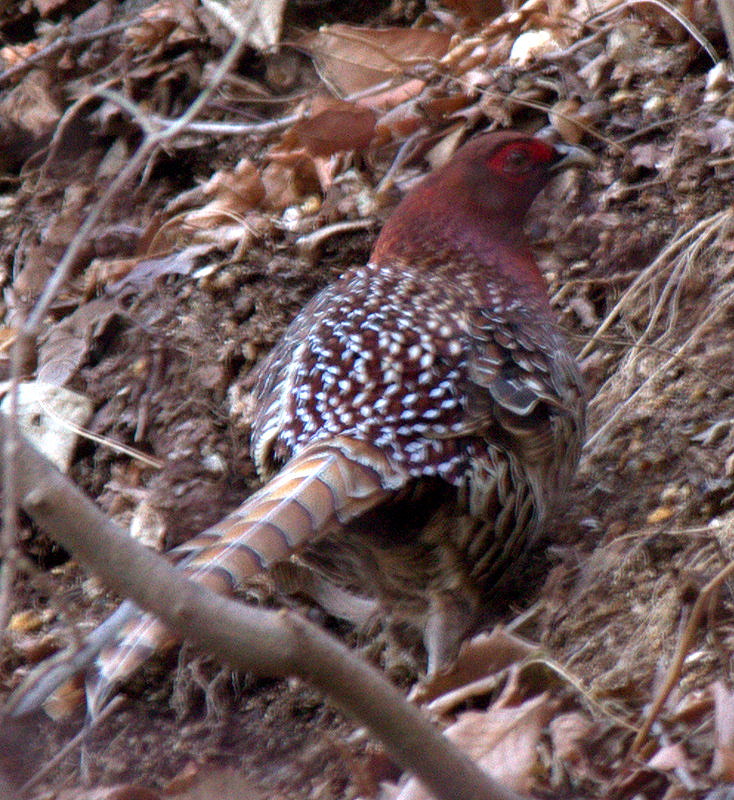 The Wild Bird Forest at Naka-Karuizawa, in Nagano Prefecture, has a justifiable reputation for producing the goods, but even though Copper Pheasant is definitely in that area, in suitable habitat, it can still take a lot of legwork (or a huge amount of good luck) to actually to see one. The forest around Mt Myogi, in neighbouring Gunma Prefecture, is another reliable place for the species.
The Wild Bird Forest at Naka-Karuizawa, in Nagano Prefecture, has a justifiable reputation for producing the goods, but even though Copper Pheasant is definitely in that area, in suitable habitat, it can still take a lot of legwork (or a huge amount of good luck) to actually to see one. The forest around Mt Myogi, in neighbouring Gunma Prefecture, is another reliable place for the species.
Anywhere along the forest trail, especially very early in the morning, there is a high chance of seeing pheasants. Few people use the track (so you are unlikely to meet anyone else) but even so, the pheasants are still very shy and almost invariably flush at first encounter, but they are there to be glimpsed or seen. Occasionally, just occasionally, one will walk instead of fly, but this is the exception rather than the rule.
Besides flushing them, the only other way to know if they are nearby is to listen for the sound of males during their wing-drumming displays. The duration of sound is very short and the frequency very low making it very easily missed. The short, low-pitched burst has been described as a buzzing sound, but also like a distant engine being turned over. These territorial display sounds are most frequently heard during early spring and summer, and the best chances are early in the day.
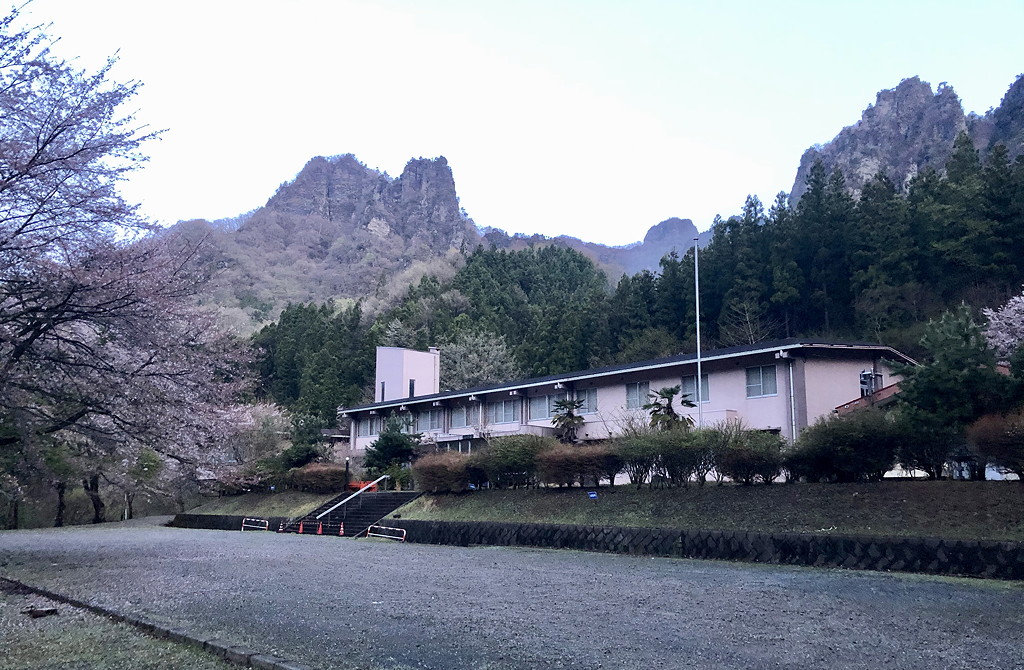 The entrance to the forest track is just metres from the bridge in front of the now-closed Myogi Kokuminshukusha (inn). The track (林道) snakes its way up through the valley and eventually joins a second track just beyond Myogi Tunnel (妙義隧道 Map: 36.282118, 138.709247), which is about 5 km from the barrier at the bridge.
The entrance to the forest track is just metres from the bridge in front of the now-closed Myogi Kokuminshukusha (inn). The track (林道) snakes its way up through the valley and eventually joins a second track just beyond Myogi Tunnel (妙義隧道 Map: 36.282118, 138.709247), which is about 5 km from the barrier at the bridge.
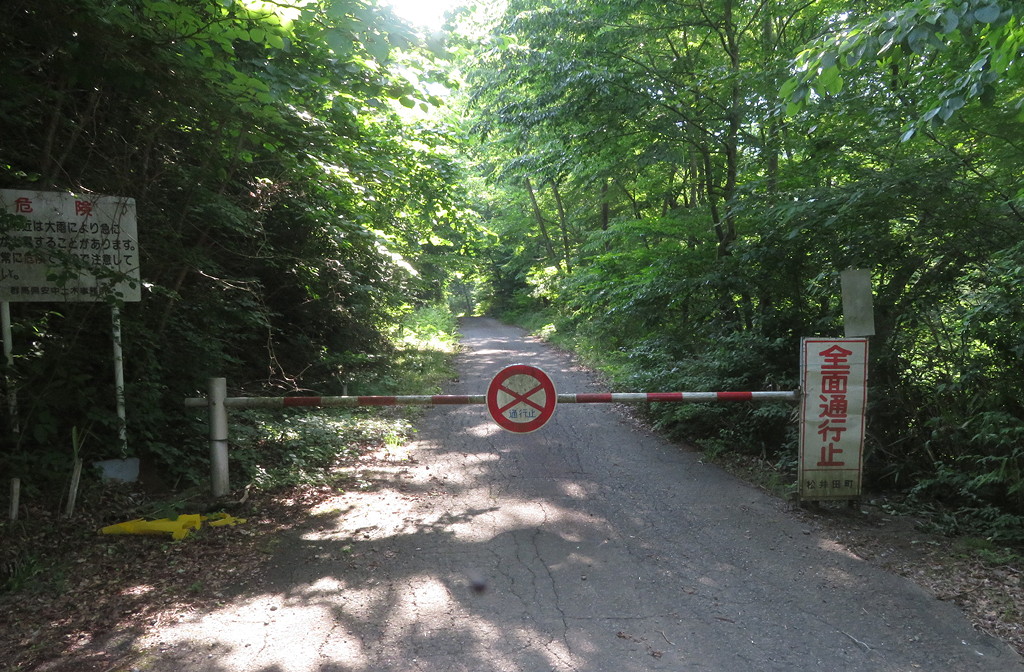 At the junction a couple of hundred metres beyond the tunnel, one track (left) drops down toward Shimonita while the other (right) goes for several kilometres in the direction of Karuizawa. If you manage to get as far as the pylon and power lines you can look out towards the Usui-Karuizawa exit of the expressway and across to the Mt Asama volcano, behind Karuizawa. At this point you will be about 15 km from Yokokawa Station.
At the junction a couple of hundred metres beyond the tunnel, one track (left) drops down toward Shimonita while the other (right) goes for several kilometres in the direction of Karuizawa. If you manage to get as far as the pylon and power lines you can look out towards the Usui-Karuizawa exit of the expressway and across to the Mt Asama volcano, behind Karuizawa. At this point you will be about 15 km from Yokokawa Station.
Another attraction in the area is Japanese Hawk Eagle, and in recent years Myogi has become a popular spot for local eagle photographers. The best places to watch for them soaring overhead is from the renowned photography spot (Map: 36.309257, 138.736007) or from the car park and steps immediately in front of the Kokuminshukusha. The best conditions for watching for them are on calm, sunny days.
In decades past Mt Myogi was one of the nearest places to Tokyo where birders could reliably hope to see Golden Eagle soaring above the craggy, Chinese painting-like landscape. They may yet return, so watch for them just in case.
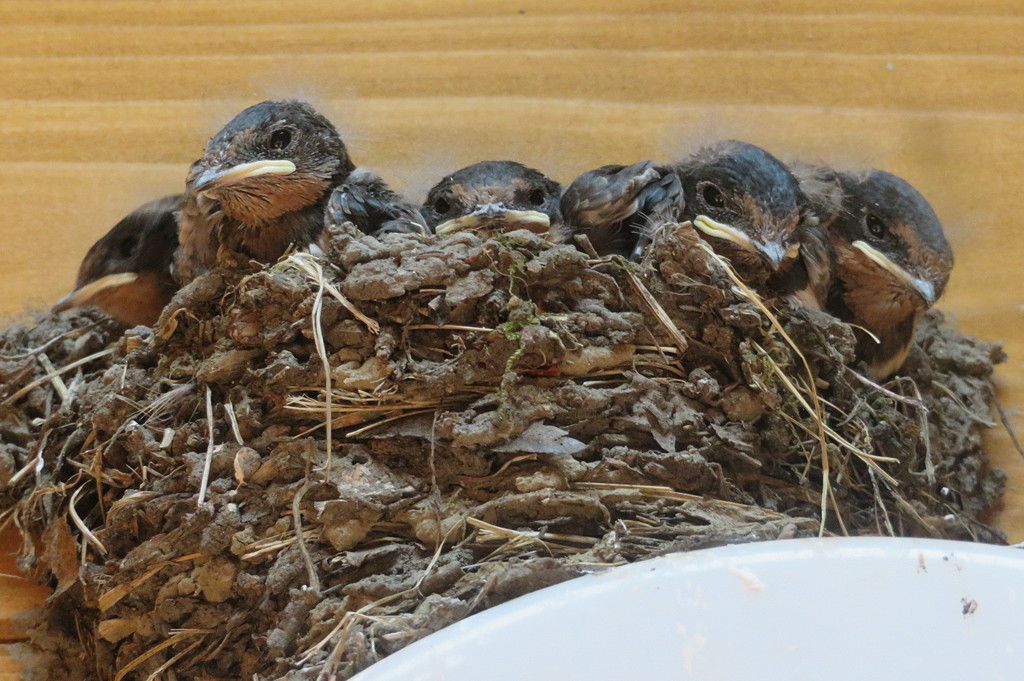 To get to Lake Myogi and the forest trail from Yokokawa Station walk southeast, crossing busy Route 18 (the Takasaki-to-Karuizawa main road) and dip down to the Usui River. Before leaving the station make sure to look for Asian House Martin and Barn Swallow both of which breed here.
To get to Lake Myogi and the forest trail from Yokokawa Station walk southeast, crossing busy Route 18 (the Takasaki-to-Karuizawa main road) and dip down to the Usui River. Before leaving the station make sure to look for Asian House Martin and Barn Swallow both of which breed here.
From the bridge over the Usui River, look carefully for Brown Dipper and three species of wagtail (Japanese Wagtail, White Wagtail and Grey Wagtail) feeding among the stones. During winter Crested Kingfisher is occasionally seen along the river or at Lake Myogi, which is about 4 km further on.
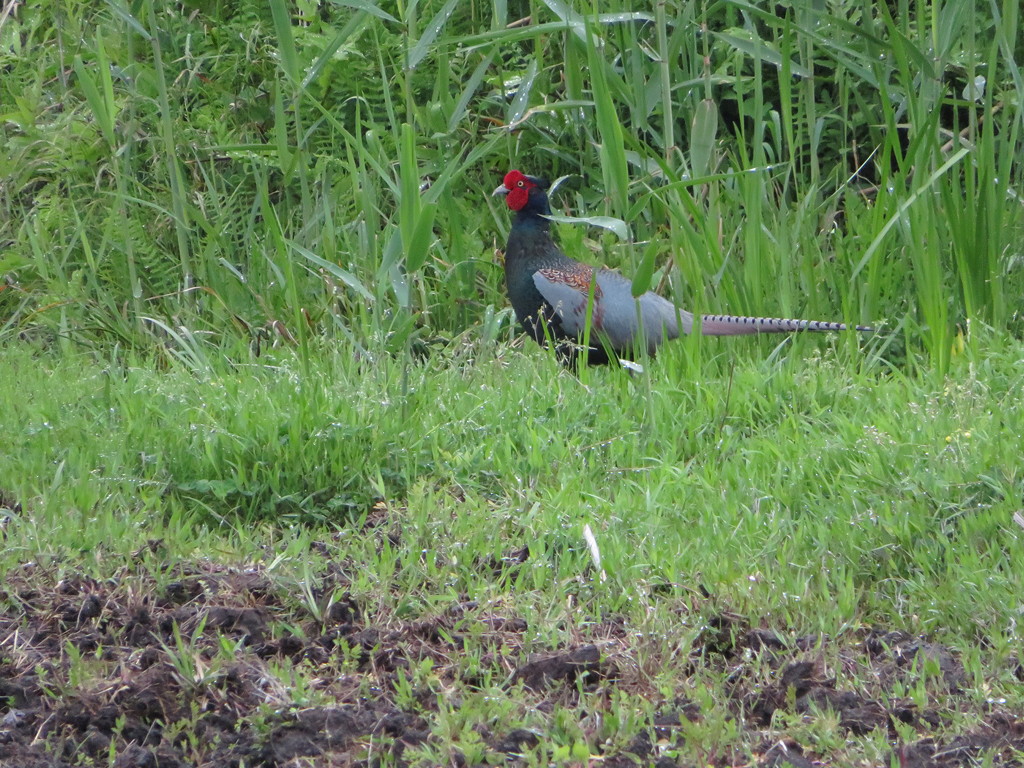 Carry on walking through the village, keeping your eyes open for resident Japanese Green Pheasant and Azure-winged Magpie, as well as for Bull-headed Shrike. During winter watch also for White-backed Woodpecker, Japanese Grosbeak and Rustic Bunting, Meadow Bunting and Masked Bunting.
Carry on walking through the village, keeping your eyes open for resident Japanese Green Pheasant and Azure-winged Magpie, as well as for Bull-headed Shrike. During winter watch also for White-backed Woodpecker, Japanese Grosbeak and Rustic Bunting, Meadow Bunting and Masked Bunting.
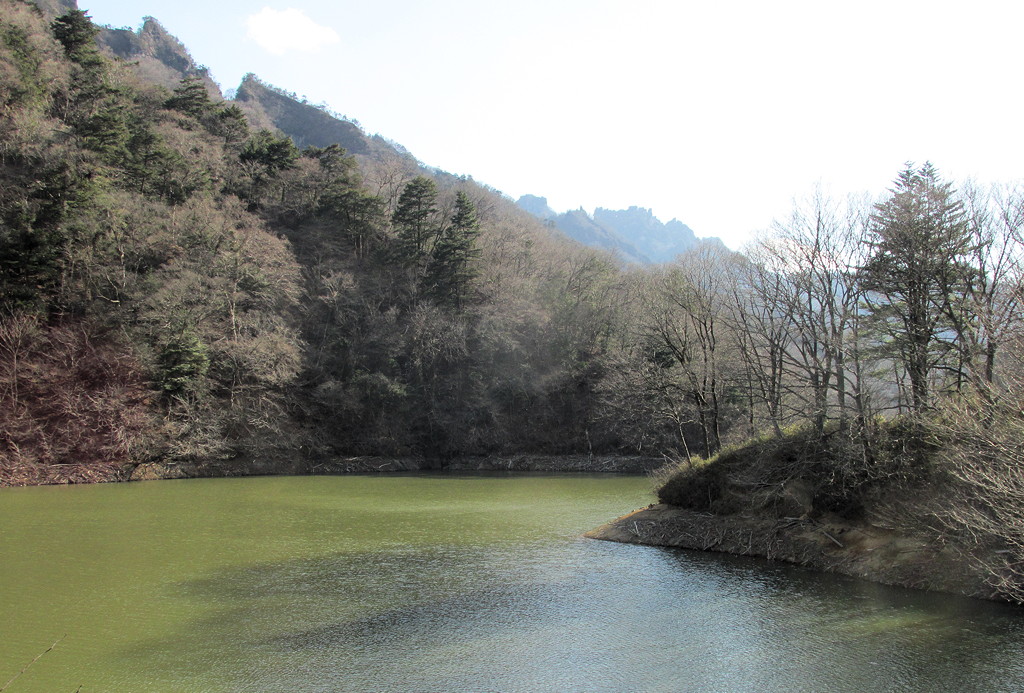 The road passes by Lake Myogi and there are a couple of lookout spots from which to scan the far bank for any ducks. Mandarin Duck can be seen during the winter, when they like to perch in the shade on the far side. The writer once saw a mixed flock of Mandarins and Baikal Teal sitting on ice early one cold winter morning many years ago, but recently the winter waterfowl are mostly Eastern Spot-billed Duck, Northern Pintail and Mallard.
The road passes by Lake Myogi and there are a couple of lookout spots from which to scan the far bank for any ducks. Mandarin Duck can be seen during the winter, when they like to perch in the shade on the far side. The writer once saw a mixed flock of Mandarins and Baikal Teal sitting on ice early one cold winter morning many years ago, but recently the winter waterfowl are mostly Eastern Spot-billed Duck, Northern Pintail and Mallard.
In the forest, Japanese Green Woodpecker, Japanese Pygmy Woodpecker and Great Spotted Woodpecker are resident, and the introduced Chinese Hwamei is loud and easy to hear in spring and summer. White-bellied Green Pigeon can be heard whistling, and around the weir at the far southwest end of the lake, where the Nakagi River enters, there is usually a pair of Brown Dipper.
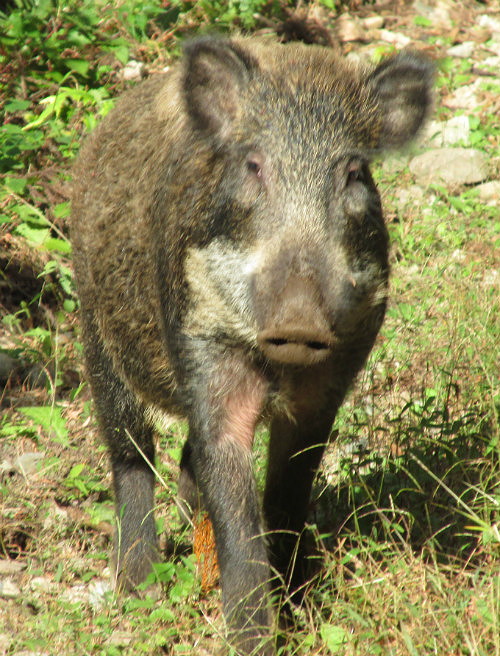 During summer, Blue-and-white Flycatcher and Narcissus Flycatcher breed in the area, and Japanese Thrush and Ruddy Kingfisher are also present. At night White's Thrush and Grey Nightjar can be heard around the village and Northern Boobook sometimes call by the lake.
During summer, Blue-and-white Flycatcher and Narcissus Flycatcher breed in the area, and Japanese Thrush and Ruddy Kingfisher are also present. At night White's Thrush and Grey Nightjar can be heard around the village and Northern Boobook sometimes call by the lake.
Unusual birds seen in the area include Japanese Lesser Sparrowhawk (probably breeding here), White-throated Needletail, Stejneger's Stonechat, Alpine Accentor, Japanese Accentor and Elegant Bunting.
While walking through Nakagi village don't miss the venerable Sazanka tree Camellia sasanqua (a kind of winter-flowering camellia that drops its petals separately rather than all together like other camellias). The tree is said to be over 1,000 years old, and it produces blooms in profusion from December until March.
Access & Facilities:
The nearest station is Yokokawa, the last stop on the Shinetsu Line from Takasaki, which itself can now be reached from Tokyo by either the Joetsu or Hokuriku Shinkansen Line trains or from Karuizawa by trains on the Hokuriku Shinkansen Line. Express trains on the Takasaki Line from Ueno or the Shonan-Shinjuku Line from Yokohama and beyond also stop at Takasaki.
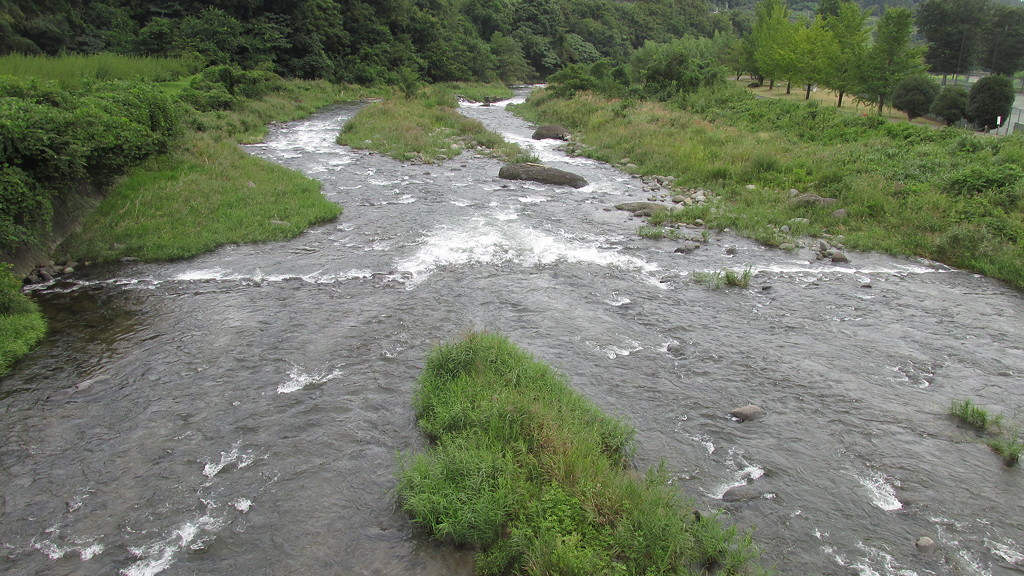 By vehicle, take Route 18 from Takasaki towards Karuizawa as far as Yokokawa Station. Turn left at the signpost to Lake Myogi. If going via the Joshinetsu Expressway, exit at Matsuida-Myogi Interchange and follow Route 18 to Yokokawa.
By vehicle, take Route 18 from Takasaki towards Karuizawa as far as Yokokawa Station. Turn left at the signpost to Lake Myogi. If going via the Joshinetsu Expressway, exit at Matsuida-Myogi Interchange and follow Route 18 to Yokokawa.
Alternatively, there is a daily bus service from Karuizawa to Yokokawa Station, but check departure times as the service is not so frequent.
Toilet facilities are available at Yokokawa Station. During the summer months, when people hike to the tops of the nearby mountains, there is also a public toilet in operation at the car park near the Kokuminshukusha. There is also a shelter at the car park. No food or drink is available, but there is a 24-hour convenience store on Route 18 just east of Yokokawa Station.
Maps:
Lake Myogi 36.316800, 138.743340
Former Myogi Kokuminshukusha car park 36.307452, 138.734746
Nakagi Village Sazanka tree 36.326250, 138.749239
Warning: Asiatic Black Bear occurs in the area so be careful, especially at dawn and dusk and in spring and early summer; there is a chance of meeting one or even a female with cubs.
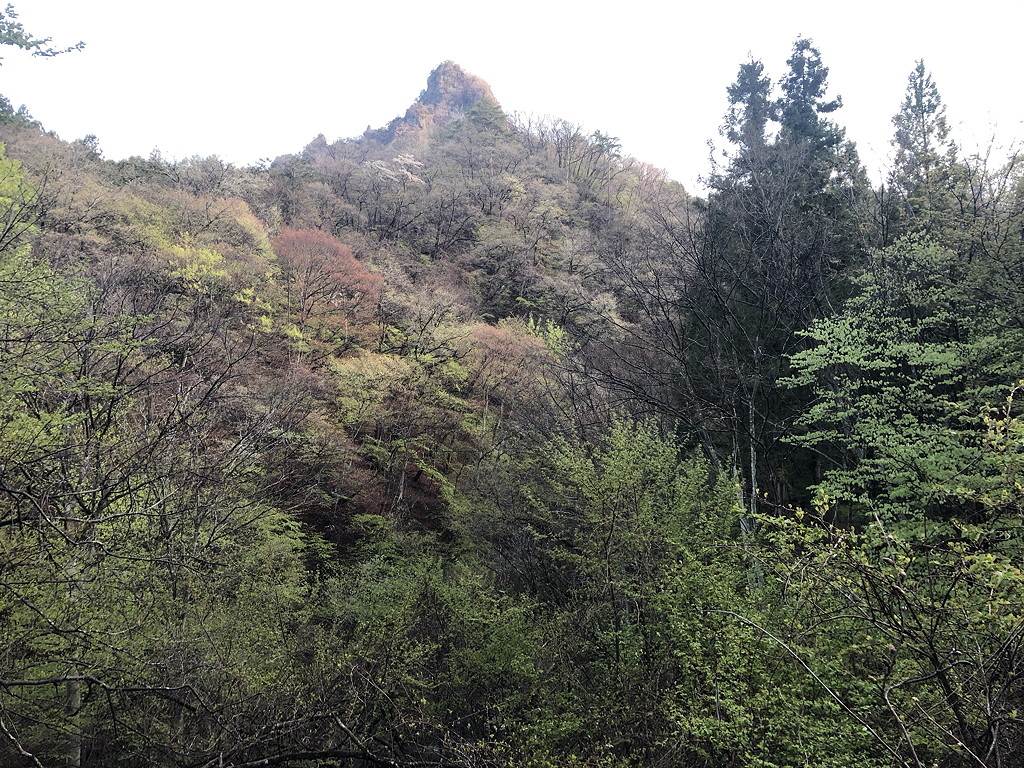
Oshimacho, Tatebayashi City 群馬県館林市大島町
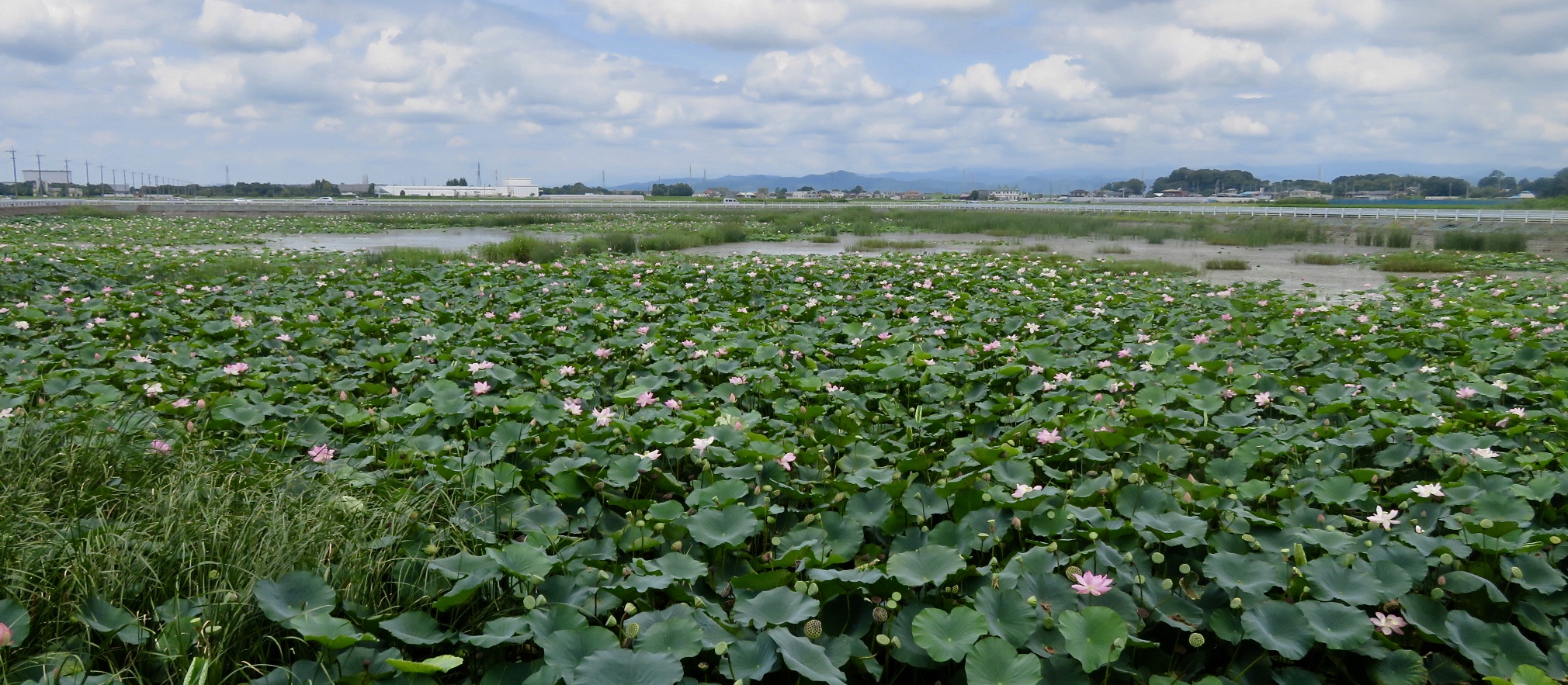 The small water catchment area, in the middle of rice paddies on the east side of Tatebayashi City, at Oshimacho in Gunma Prefecture is a popular spot during the early summer month for photographers — specifically those targeting Yellow Bitterns.
The small water catchment area, in the middle of rice paddies on the east side of Tatebayashi City, at Oshimacho in Gunma Prefecture is a popular spot during the early summer month for photographers — specifically those targeting Yellow Bitterns.
Timing is everything, and from about mid-July until early August, the surface of the pond is covered with the large leaves of lotus plants and, on long, slender stalks above them, an equally eye-catching array of pink flowers.
Several pairs of Yellow Bitterns breed here, and photographers are after only one thing: the perfect image of a bittern perched beside a lotus flower.
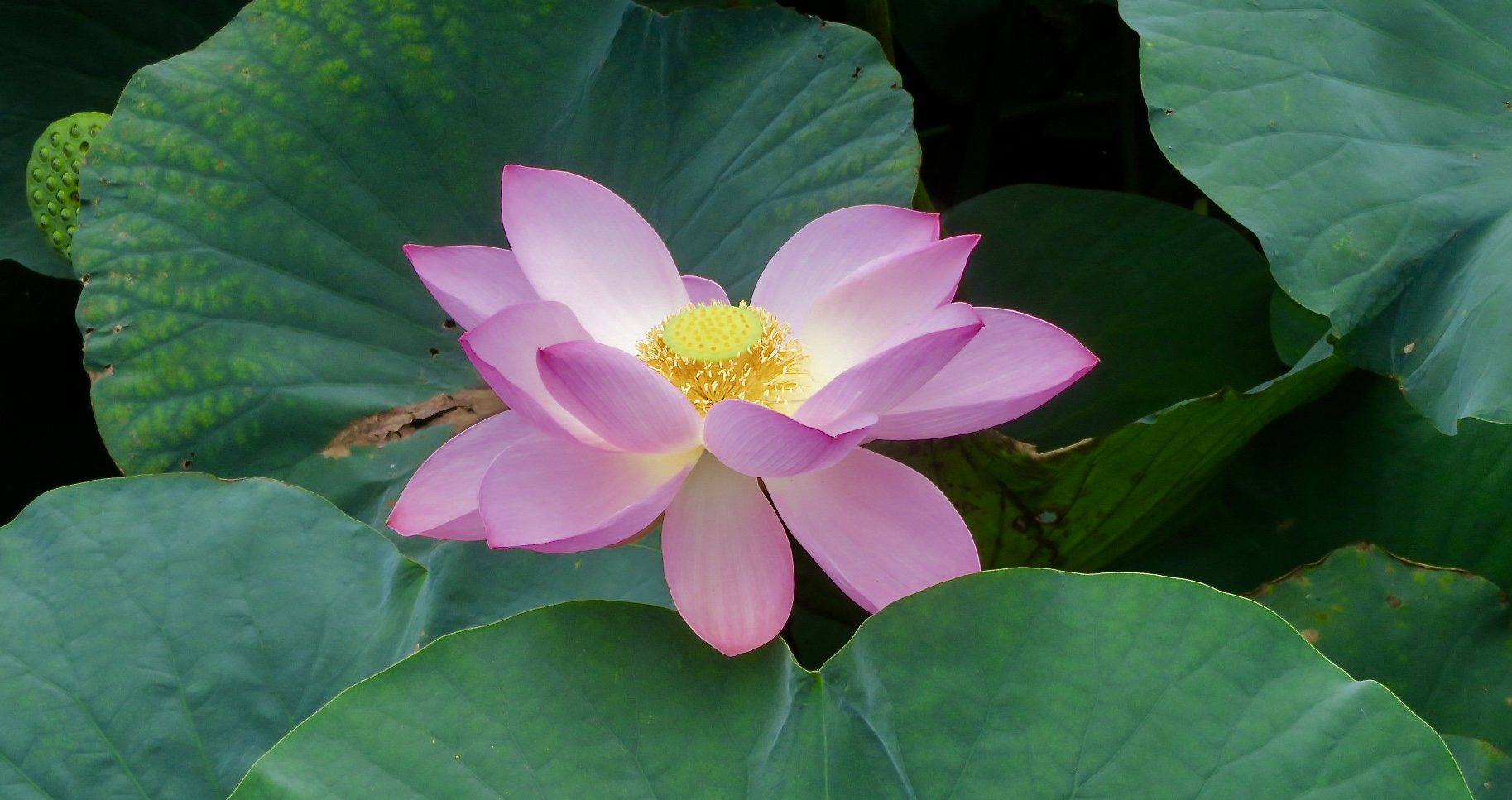 Access:
Access:
The pond is on the west side of Route 364, just over 1 km south of Nishiyada Post Office, which is at the junction of routes 364 and 57. There is a bus stop (Nishiyada Yubinkyoku-mae) near the junction (please check with the tourist information desk at JR Tatebayashi Station for departure details).
Map:
36.254581, 139.619032
© 2021 Mark Brazil & Chris Cook
Last updated: 20210610
